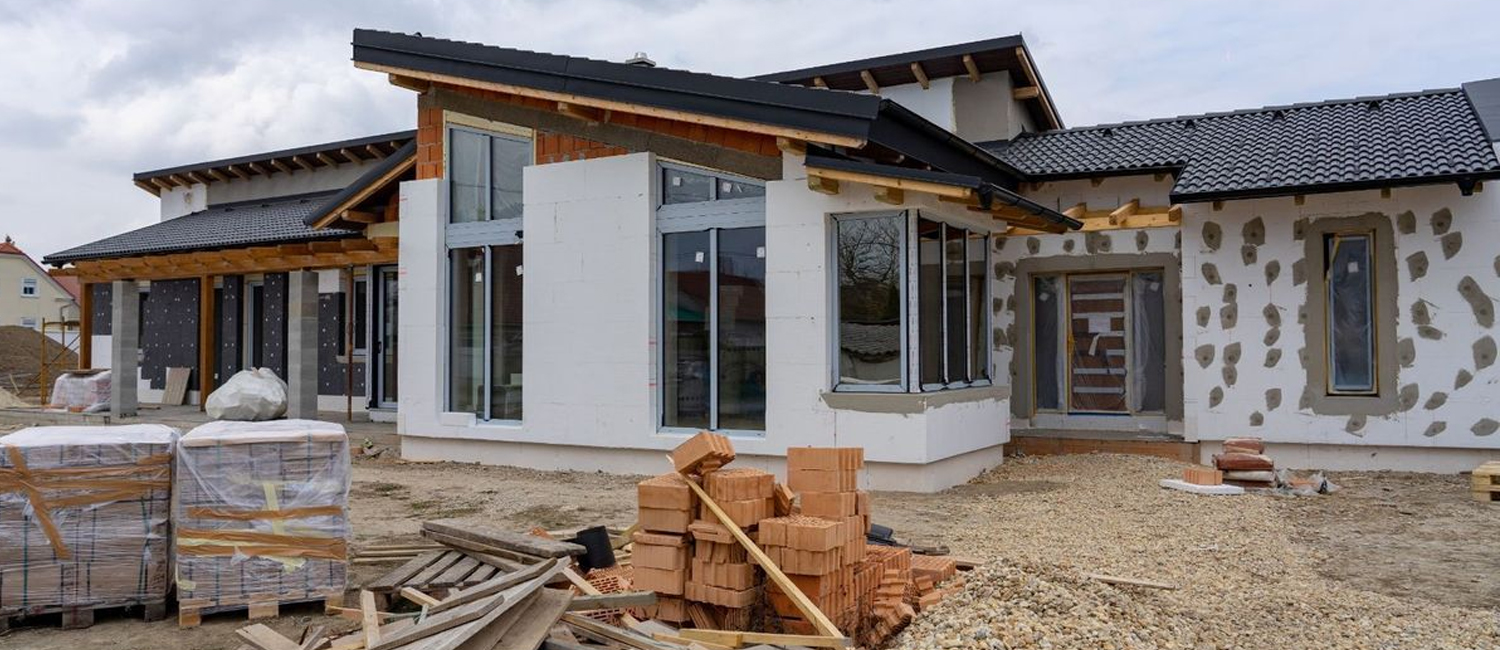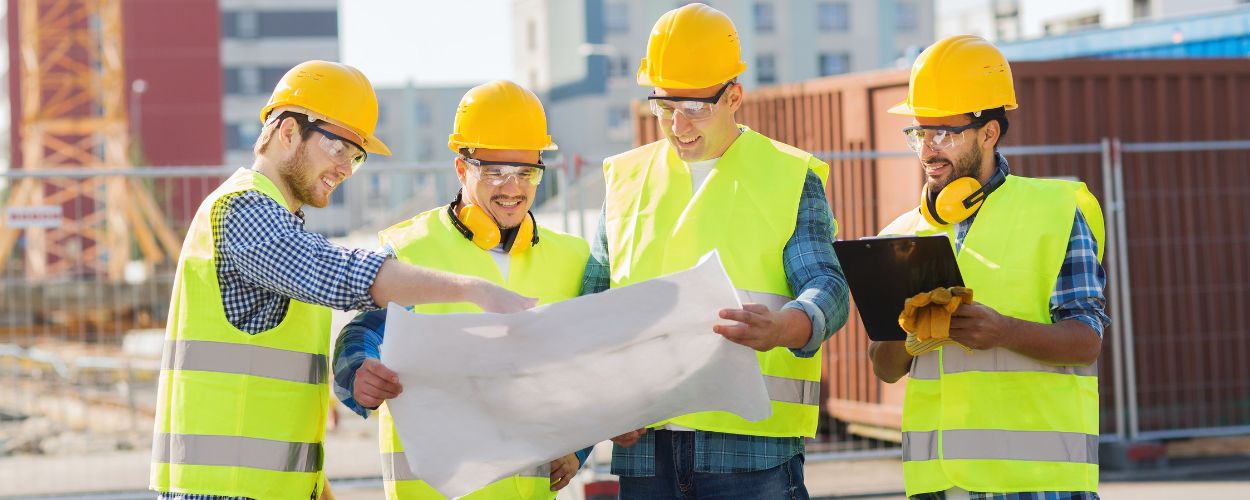Get free quotes within minutes
Will Home Construction Costs Go Down In 2025 In Australia

Table Of Content
- Introduction
- What Factors Influence Home Construction Costs?
- Why Home Construction Costs May Decrease In 2025?
- How To Plan For Building Or Renovating Amid Fluctuating Costs?
- How ServiceTasker Can Help You Find Affordable And Reliable Building Contractors?
- Conclusion
Is 2025 the Right Time to Build? Understanding Australia's Construction Costs
Constructing a home is an exciting opportunity. With home prices continuously soaring, many are eyeing for an alternative. However, construction costs in Australia vary greatly, so there is always a chance to catch the low-price moment.
The construction business in Australia is a huge financial problem. In 2024 alone, 2,643 construction companies were referred to external administration, a jump of 140% from 2022. Late payments also plagued the sector, wherein 10.46% of construction businesses suffered delays of over 60 days.
The industry has the second-highest debt with more than $100,000; only food and beverage services have more. Construction firm failure rates increased by 15% in the past six months. This complicates costing and means it's harder to forecast the total cost of your home construction. Here's what you need to follow when estimating your budget for home construction in 2025.
What Factors Influence Home Construction Costs?
The cost of constructing homes varies widely in Australia. Several critical things determine the final expenditure. To get a better understanding of what influences these costs, it’s important to refer to a Cost Guide that provides detailed insights.
Additionally, knowing How Much Builders Cost in Australia can help you budget effectively and make informed decisions when hiring contractors for your home construction project..
Size of the House
The size of the house is one of the leading factors affecting the cost. Larger buildings require more building materials, equipment, and labour leading to a higher price. The size of the average Australian house is about 195.8 square meters.
This usually comprises three bedrooms and occupies approximately 470 square meters of land. The average sizes for new builds, however, are commonly bigger.
The average new build space amounts to 235.8 square meters. Larger homes require more materials apart from more labour input, causing the cost to go up.
Quality of Materials and Finishes
The materials you decide to use will also determine your budget. High-quality materials provide better durability and finish but at a higher price.
Choosing premium materials may boost the quality of your house's workmanship, but they will increase the cost per square meter. On the contrary, cheaper materials help one balance affordability with quality.
However, these cheap materials may incur more repairs and replacements over time. There should be a balance between quality and cost; meet your requirements and be cost-effective.
Labour Costs
Labour costs in Australia are based on many factors. The design complexity, local market rates, and finishes impact labour costs. Industry-wide issues, such as labour shortages, usually increase it more.
Market demand for builders and sub-contractors may influence what you end up paying. Getting quotes from reliable new home builders will help you draw a rough cost and control your budget.
Design Complexity
The complexity of your house design will directly determine the pre-construction costs. A simple design is cheaper and quicker to put up.
More complex designs with intricate features, multiple levels, and unique architecture require more labour, time, and materials. Such complexities raise the cost and prolong the building timeline.
Choose a design that serves you well enough to hit the imaginary line between your dreams and financial plans.
Location and Site Considerations
The construction costs may depend on the place. Extra requirements from the council or planning overlays carried with specific places increase the costs.
If the land has poor soil quality or slope, the land may require more preparation, which costs more. For example, challenging site preparation requires more specialised equipment or techniques by the builders.
The other influencer is the location as it will alter access for the builders and delivery of materials.
Timeframes and Supply Chain Issues
The total cost is significantly affected by construction schedules. Delays in material delivery times, otherwise known as disrupted supply chains, lead to delays in construction work.
Disruptions lead to extra holding costs: rent or loan interest payments. In Australia, high demand for materials and labour shortages makes it challenging.
Discussions with your builder can be helpful to pre-empt delays and keep your expectations in check while maintaining an optimal pace in the project.
Land Costs
Land costs vary widely from time to time. It depends upon the locality, size, and zoning regulations. Costly land is often found within major cities such as Sydney and Melbourne to access amenities and job availability, whereas more affordable land is found in rural and suburban areas. Australia has lot prices ranging from $245,250 in Perth to $641,250 in Greater Sydney.
Regulatory and Permit Costs
Housebuilding approvals and permits from the respective local authorities will be required. These are planning permits, building permits, and environmental clearances.
The fees vary from region to region and add up significantly to the final cost. You must include it in your budgeting as the fee scale will change depending on the area the house is being built in. Consulting your builder or architect ensures that all the permits are obtained.
Contingencies
A contingency budget must be a part of any construction. This covers the cost by either site or material price fluctuations that may arise during the construction period.
Experts say that one should allocate 5% to 15% of their total cost for contingencies. In this way, you are guaranteed to keep your project on track and not run out of money.
Contractor's Markup
The mark-up payable by the contractor shall be on the total construction cost. That cost is divided by cover to ascertain profit and overhead. It depends from contractor to contractor on his reputation, experience, and market demand.
Generally, they charge between 10% and 20% of the total project cost. It should be discussed with the contractor in advance before starting the project.
Client's Requirements
Any specific demands of a client for the requirements of the house will increase the costs. Most require beauty and luxury finishes, while others stress functionality and durability.
Adding pricey materials, smart home automation, or energy efficacy features may increase construction costs. You should communicate such requirements carefully to your builder so that the final design fits within your budget.
If your project includes outdoor structures, you can also consider hiring Retaining Wall Builders, Gazebo Builders, or Shed Builders to enhance your property’s functionality and aesthetics.
Methods of Construction
The cost will depend on the method of construction adopted by the contractor. Traditional methods such as brick-and-mortar buildings tend to be more expensive, mainly because labour intensity drives up cost.
Newer methods like modular construction can sometimes provide cost savings and quicker build times. You can discuss construction methods with your builder to understand the implications of cost.
If you're adding outdoor features like a pergola or pool, discussing with Pergola Builders and Pool Builders may help you assess the most cost-effective methods.
Delays in Construction
Delays are some other events that can push the cost of construction, particularly during the construction period. Examples include bad weather, labour shortages, or issues with material delivery among others.
Some of the common delays included equipment rental costs, storage for materials and labourers' wages when they increase due to such probable disruptions. Ensure your builder, therefore, has an established timeline and method for dealing with probable disruptions.
Registration and Approval Costs
The fees for registration and approval differ from locality to locality and from government to government. Such may range from registration of the project, requesting necessary approvals, as well as meeting the building codes of the local government.
Rates in every region will be different and should be included in your budget. Failure to do so may bring penalties or even more delays in legal matters.
Market Fluctuations
Price shifts due to changes in the market for construction materials, labour, or equipment hire occur. Sometimes, though not very often, demand suddenly becomes high, or another interference in the supply chain causes the prices to rise.
Having a grasp of the situation on the market or being in close contact with your builder cushions the shock.
Why Home Construction Costs May Decrease In 2025?
According to economists, home construction prices may fall in Australia in 2025 for several reasons. For one, the Reserve Bank of Australia, or RBA, has been hiking interest rates as a measure to quell inflation.
The cash rate topped at 4.1% in August 2023, from its 2022 May rate of 0.1%. If inflation is under control, the RBA is likely to stop cutting or scrapping interest rates, while decreasing costs of construction through cheaper borrowing.
The construction costs in Australia may decline drastically in 2025 due to different factors. Investigations into outlaw motorcycle gangs in the CFMEU have shaken up the construction industry of late.
All its branches were put under administration by the government. To many, this is a chance to clean up the sector. Its impact on the market is yet to be determined.
There is still some difficulty, but dwelling approvals have gained momentum in most of the states, as estimated by the ABS. New South Wales, South Australia, and Western Australia recorded gains, while Queensland dipped.
The combined effects of high interest rates, contractor insolvencies, and lack of skilled labour are blamed for the low market sentiment.
The housing market is too slowing down, with sales and prices falling. Builders may sell at low prices in case their inventory is high.
There are governmental initiatives toward increasing the supply of houses through zoning changes and incentives to developers, which could push prices lower. First-home buyer incentives, such as grants and stamp duty concessions, could also reduce demand.
Labor shortages are a labor shortage and labor is expensive. But if the government is able to attract more skilled labourers, their costs will drop again.
Materials costs are always going to be unpredictable with global supply chain issues and high demand, but likely continue to move down. And if material prices decrease, so does construction cost in Australia.
These might be the inflation rates, possibly with downward revisions in interest rates, government policies related to housing, and reduced material expenses.
This is what is forcing construction to reduce costs as much as possible in 2025. The uncertainty of the situation does not weaken; it demands constant monitoring.
How To Plan For Building Or Renovating Amid Fluctuating Costs?
Preparation is ultimate when planning to build or renovate in Australia, which faces fluctuating costs. Australian citizens spend approximately $25,000 on renovations, according to the ABS, while the cost ranges between $600 to $2,700 per square meter. If you want to save a few dollars, these are the key tips:
Start by considering a realistic budget. These demands measure your situation, and then you determine how much you can pay without financial stress and strain.
This includes not only income but also savings and credit lines available if any. Be honest about what you should take home, so you do not end up overspending.
Look at the costs of comparable renovations in your region. In your house, such factors as dimensions, complexities, and materials used will affect your budget.
In priorities, consider works that would be raising issues such as structural shortcomings first, rather than cosmetic changes.
Research financing, considering home equity loans, personal loans, or mortgage refinancing. Compare the interest rates and payment terms to choose the most suitable renovation financing.
Prepare a very detailed renovation plan. You should be able to describe your project in full scope and note areas in which you could cut down on costs. Planning will keep you better focused and help you avoid costly surprises.
Choose fixed-price contracts where possible to avoid cost fluctuations. Ask a contractor if they can quote fixed prices for their products and the cost of labour.
Search for cost-cutting measures. Ask the professionals if you can use other materials or techniques that would also cut costs. This may perhaps call for less structural work or easy building techniques.
Order all your materials beforehand for when the prices are fixed for it. If possible, store materials on-site to avoid delay and cost increases.
How ServiceTasker Can Help You Find Affordable And Reliable Building Contractors?
If you're going to renovate your home and want to know what you have to pay for later, you should be acting now. Home improvement costs depend on the market environment, material supplies, and labour. It's hard to predict and calculate precise prices for 2025 but act early and ask for quotes.
Indeed, ServiceTasker is one of the great means to find trusted building contractors in Australia. Here's how it can help you:
Wide Network of Verified Contractors
- Huge Database: ServiceTasker connects you to a huge network of verified contractors across Australia.
- Verified Profiles: Contractors' profiles get verified to assure expertise, most of them are ABN verified.
Easy Task Posting
- Simple Process: You can easily post your project details, budget, and timeline.
- Free to Post: No charge is incurred to post tasks on ServiceTasker.
Multiple FREE Quotes
- Competitive Pricing: Get 3 FREE quotes from multiple contractors so that prices are compared.
- Clear Communication: Personal communication with the contractor regarding the details of the project.
Customer Reviews and Rating
- Informed Choices: You can see reviews and ratings given by other customers to understand whether a contractor is reliable or not.
- Trustable Reviews: The feedback allows for more confident decisions.
Find the most trustworthy and cost-effective contractors using ServiceTasker. We're going to make your new home construction or renovation process relatively smooth, and you can place your task today and get quotes!
Conclusion
Building or renovating a home in 2025 may become more affordable due to possible shifts in interest rates, material costs, and skilled labour availability.
Planning carefully with a realistic budget, exploring financing options, and using ServiceTasker to find verified, reliable contractors can help you navigate the fluctuating market and achieve your construction goals affordably.
YOU MIGHT ALSO BE INTERESTED IN













